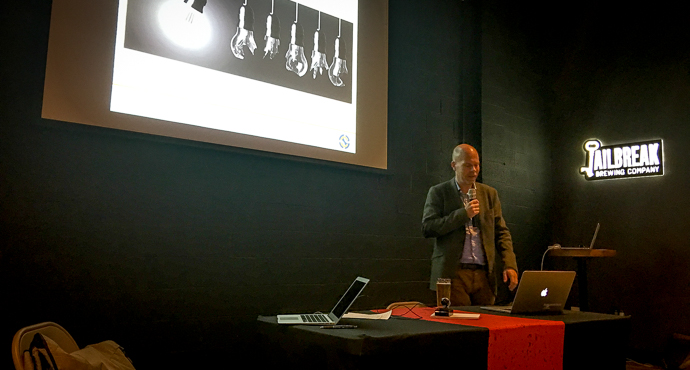
Blockchain and Bitcoin brewing: Chainalysis on disruption and regulation.
Chainalysis CEO Michael Gronager contributed his own explanation of how blockchain worked, why it was important, how it was likely to be disruptive, and the ways in which users and regulators were beginning to cope with the technology's implications.
Background: Chainalysis
Chainalysis Inc. takes its mission to be "protecting the integrity of digital assets." They offer activity monitoring, looking at blockchain activity broken into various appropriate categories so organizations can assess their risk of doing business with various customers. They provide "advanced due diligence tools" for visualizing the source and destination of funds. And they provide cyber threat intelligence. The company's customers include regulatory bodies, law enforcement agencies (including Europol) and financial service providers.
Why blockchain is disruptive.
Gronager defined blockchain as "a permissionless distributed database hardened against tampering and revision." It's key concept is "digital scarcity," items that can't be copied, only moved.
The technology has received all the hype it has, in Gronager's view, precisely because it's disruptive. He offered some examples of disruption in other industries. Ford's Model T was inferior in most of aspects of performance and design to contemporary competitors like Mercedes in the motorcar market. But the Model T nonetheless disrupted the way cars were produced, which drove down unit prices, transformed the automobile from a plaything for wealthy enthusiasts to a quotidian means of transformation, and that changed society.
To take a more recent example, Skype disrupted the voice-over-IP space. It's audio and video quality were noticeably lower than existing systems when Skype entered the market, but it was both affordable and generally usable, and so has disrupted telecommunications markets.
Blockchain, Gronager explained, is disruptive because it provides convertability and certifiability, and because it lowers the cost of both.
It also offers a disruptive approach to financial regulation. Gronager invited the audience to consider Consider Uber's disruptive record. It solved what's essentially a regulatory challenge through the convergence of three technologies: GPS + social media + big data = regulation. Uber's rating system created self-regulation. "Blockchain provides an analogous auditability, which is what you need to regulate financial transactions. You find a virtuous transparency in the blockchain."
Regulatory technology (and sniffing out the criminals).
Is blockchain then a regulatory or a financial technology? In fact, Gronager argued, it's both. Banks originally resisted Bitcoin, but they're now beginning to appreciate and use the currency's auditability.
"Where you have money," Gronager observed, "you have crime." There are now, however, monitoring and enforcement tools that can cope with the hundred million addresses transferring funds in hundreds of millions of transactions. "These can be clustered and mapped, getting you down to a manageable number of services." Chainalysis has some 80% of services mapped and categorized.
Gronager ran through data visualization and what Chainalysis analytics can reveal about Bitcoin transactions. He showed demonstrations in which they were able to assist in a European drug case, and closed with a persuasive illustration that blockchain is, in fact, well adapted to a self-organized regulatory regime—an Uber for financial services.
